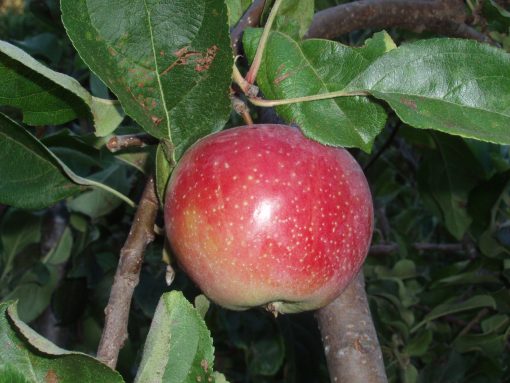
It’s not too late but time is running out if you’re looking to add fruit and nut trees, berries and vegetables to your garden while they’re still available in bare root. Did you know just how long that new fruit tree will be around if you plant it now? If you like figs or walnuts, you can expect your tree to live for 100 years. Apples and pears have a life expectancy of 60 years while plums, pluots and prune trees will be around for 40 years. Love cherries? Your new tree will be in your garden for 30 years. Invest in the future and plant a fruit tree now while they are still in bare root and oh, so easy to plant.
Jeff at Mountain Feed & Farm Supply in Ben Lomond recently showed me around all the edibles available at the store. I’m always on the look out for something new that I might recommend to a client for their garden and I found some good ones in addition to the classic fruit, nuts, berries and vegetables.
If you grow in containers or small spaces try the dwarf thornless Blackberry ‘Baby Cakes’. You’ll get two crops of large, classic, sweet tasting berries per season. Or you might have your eye on a multi graft peach, pear or cherry or a “fruit salad” multi grafted tree. Maybe a weeping Santa Rosa plum would look stunning outside the kitchen window? So many choices.
Jet, my go-to expert at Scarborough Gardens in Scotts Valley, had many great fruit trees still available in bare root. Because they are so beautiful in bloom, I’ve always wanted a dwarf peach or nectarine. From world famous Floyd Zaiger, Arctic Babe, a genetic dwarf white nectarine is a first of its kind. It’s a reliable self fruitful, delicious nectarine ripening late May to early June. Of course, there are apricots, pears, plums, apples, peaches and nectarines also available.
Planting a bare root tree is easy. In most soils, even sand or clay, bare root trees are best planted in your native soil. Less is more when it comes to amending your soil. You want our tree’s roots to reach far into the surrounding soil, and if you have added too much amendment, the roots will tend to grow only in the richest soil right around the tree. You can add a starter fertilizer like Dr. Earth Root Zone or E.B.Stone Sure Start with mycohizzal organisms and micronutrients.
Don’t plant in heavy saturated soil. If your soil drains poorly it’s best to place your tree at an angle in a trench and cover with soil or place it in a can. Wait to plant until the soil is crumbly and friable. Digging in waterlogged soil is one of the worst things you can do for your soil’s health.
What fruit trees can you grow here in the mountains? Well, almost everything. Most of us get 700 hours of winter chilling where the temperature is below 45 degrees. Even with climate change the chill hours add up. And we can still grow fruit like a Fuji apple that doesn’t require this much chill.
What if you don’t get full sun where you’d like to grow fruit trees? Apples, pluots and plums are good choices for an area that gets at least 5 hours of sun a day during the growing season. The ideal is full sun but these trees will still set and ripen some fruit in partially shaded conditions. With peaches, nectarines or apricots it’s a different story. These fruits need hot sun to develop sweet, tasty fruit. Too little sun and they will not deliver anything close to what you have in mind.
With a little planning you can have fresh fruit 7 months of the year. By growing your own fruit you’re not at the mercy of mechanical harvesters and shipping practices. You can grow fruit and harvest it when the time is right. Homegrown fruit is a world apart from agribusiness and much less expensive than the Farmer’s Market.
